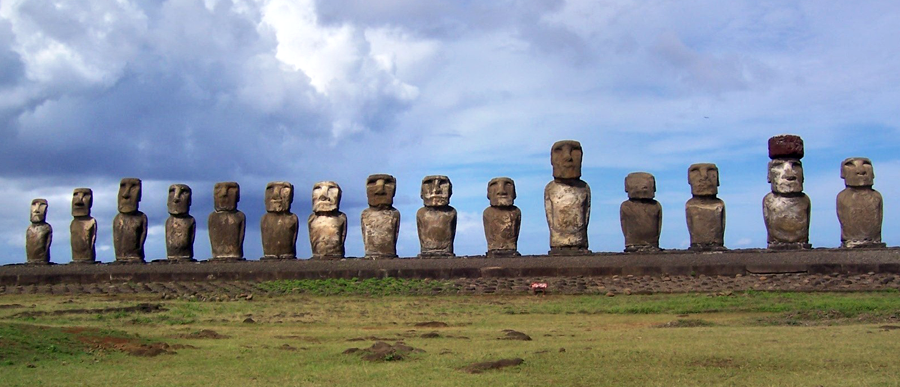
Easter Island is not the easiest place to get to, but it’s certainly well worth the trip. Full of mystery and fascination, it sits halfway between Chile and Tahiti in the South Pacific. Most famous for its Moai statues, carved centuries ago out of volcanic rock, its earliest people were Polynesian seafarers, who had been lost at sea for months in the first millennium AD. These settlers – or Rapa Nui – formed a thriving civilisation. For millions of years the island, formed following a volcanic eruption, had been inhabited entirely by birds and dragonflies. This beautiful place is truly an enigma and full of World Heritage Sites.
The main town is Hanga Roa, which comprises around 87% of the entire province’s population. It includes the airport, multipurpose stadium and a decent amount of tourist accommodation. There are also great restaurants serving some very delicious fish, caught fresh from the surrounding Pacific waters.
In and around the island are islets too, home to some rare bird species like the majestic Chimango Caracara, which can be seen on boat trips. Diving is also a popular pastime here with the water being ideal for spotting marine life.
The white sand Ovahe Beach is on the north side of the island and is said to be the place where the original settlers first arrived. Today it is an ideal spot for relaxation after hiking up to Rapa Nui National Park. This World Heritage Site is a perfect place to see a variety of Moai, ranging from finished statues to ones barely even begun. No one knows exactly why the early settlers made them, but as they began to form clans across the island’s 64 square miles, the statue construction and cult surrounding them seemed to unify everyone together.
The island’s earliest history was largely destroyed by Peruvian slave traders and later missionaries, both in the 19th Century. The former kidnapped most of the already dwindling numbers of settlers for slavery, while the latter destroyed buildings, religious relics and tablets which contained crucial cultural information. We will probably never know its full story, but why not venture over and experience this captivating island for yourself?
Great travel articles as well as deals, all sent directly to your inbox. Sign up today!
